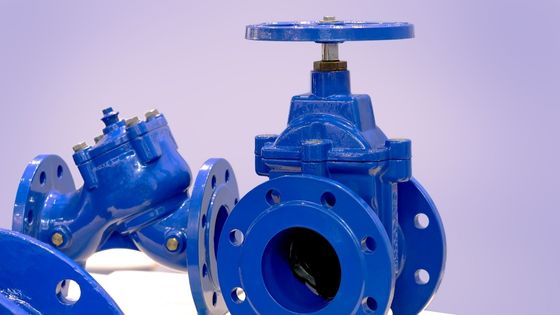Don’t know what throttling is?
Usually an industrial process, throttling allows us to convert high-pressure fluid into low-pressure fluid without the expenditure of energy. This is made possible by passing the high pressure fluid through an opening into a pipe that has a larger diameter.
Also called wire drawing, the mechanics are very familiar and you might be applying the same concept in your daily lives. When you put your thumb over your gardening hose, you’re essentially reducing pressure and increasing velocity. This fluid, however, can be a liquid or even a gas.
But when deciding which valve to install, the decision can depend on a variety of factors. Let’s first consider the best valves for throttling that are out there and then look at how to choose one.

Types of valves
Globe valves
Older globe valves were called so because of their shape, but newer ones are not so spherical anymore. The ring seat stays up, whereas the disk moves up and down to regulate the pressure of the fluid that flows through it.
For extremely high pressure fluids, an actuator might be needed. There are, however, possibilities of leakage since the seat comes into direct contact with the medium.
Butterfly valves
An actuator connected to the stem and the disc reduces pressure as fluid flows through the butterfly valve. It looks very similar to gate valves, except it is really effective.
These might not be the best solution if you work with solutions that react with metal. Since the metal disc is always in contact with the fluid, it can erode. These are also difficult to clean but are still quite popular because of their unique design and easy use.
Needle valves
If you need extremely precise pressure regulation, needle valves are the way to go. Similar to globe valves, but with a needle-like disc instead, needle valves are more efficient when handling smaller quantities. These valves typically have a smaller opening for the medium to flow through, so using liquids that are too viscous might also damage its mechanics.
Gate valves
The primary purpose of gate valves is not actually for throttling, but when it is 90% closed, it works similarly to other throttling valves. You can’t use these for too long, or they lose their ability to close. When liquid passes through it, it can also cause vibration, damaging the seat.
For throttling? This one just doesn’t cut. Maybe if you need to be throttling once in a blue moon.
Diaphragm valves
As the name suggests, a diaphragm disk presses against the valve to partially close it in a diaphragm valve. This type is leak-proof, which makes this ideal if you work with reactive, toxic, or harmful substances. However, it can’t handle too high temperatures or pressure, which is a downfall.
If you’re interested in the science behind throttling and want to make the most informed decision, try out a more comprehensive guide.
How do you pick the best one for you?
While these valves have their advantages and disadvantages, their unique designs indicate that they’re best when used for a specific purpose. To decide which one you should get, you should consider the following factors:
1. Material
What your valve is made out of is essential, especially in industrial settings. You want a non-reactive element that has the capacity for strength.
2. Nature of medium
Whether your fluid is liquid or gas can differentially affect the functioning of valves. Some valves vibrate too much with liquid, while others do so with glasses.
3. Valve size
Of course, a professional always helps with the calculations to decide how big a valve must be installed. The valve’s throttling capacity will obviously be limited when an opening is too big, so it depends on your requirements.
4. Pipe connections
What kind of pipes have you already installed? Where would you install the valve? These are questions you need to answer before you get to pick out a valve. It’s always easier to alter a valve according to your pipes rather than the other way around, which could cost you a fortune and a half.
5. Industry Standards
Not only will a little research on industry standards expand your knowledge about the options you’ve got, but it also tells you essential safety considerations such as how thick the metal for the valve needs to be or which end connections need to be made.
Conclusion
Although we just gave you an introduction to throttling valves, remember that it’s always best to consult a professional. Research and consultation are always the way to go, whether it’s about decisions like which machine to buy or which floating platform to use.
